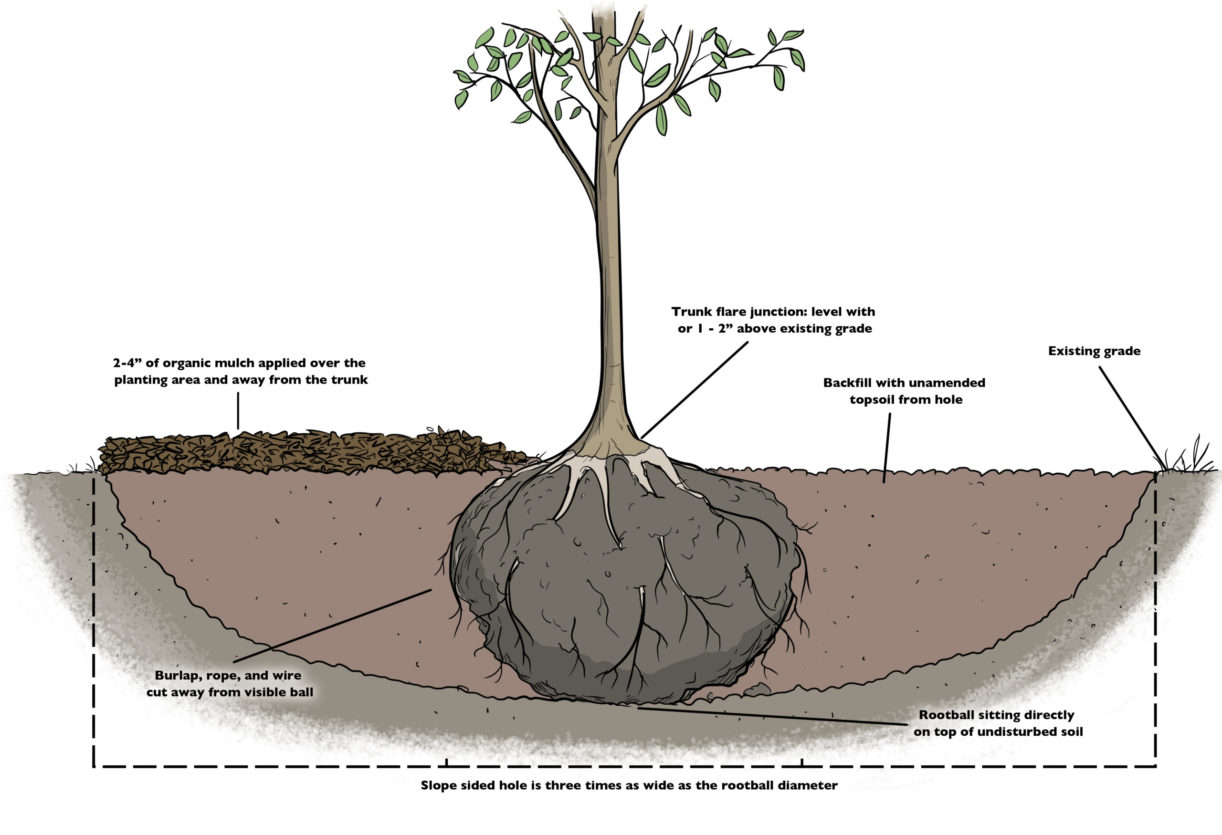The following text and images were developed by The Morton Arboretum.
Additional information can be found here.
Watering Trees and Shrubs
Excessively dry soils kill small roots and reduce a tree’s capacity to absorb water, even after the soil is re-moistened. The resulting drought stress increases a tree’s susceptibility to certain diseases and insects. Precious energy reserves must be used to replace the lost roots. Keep your trees and shrubs adequately watered by following the guidelines listed below.
Checking Soil Moisture
There is no way to look at the soil from above and tell how much moisture is in it. The only way to be sure of how much moisture is in the soil is to probe or dig. A trowel, metal rod, or soil sampling tool can be used. Low-cost soil moisture meters are not very accurate. A metal rod, such as the end of a root feeder (without the water running), may be the most convenient tool for the homeowner to obtain and use. Very dry soil will resist penetration of the rod and indicate the need for watering. After a little bit of practice, anyone can learn to use this simple tool.
Newly Planted Trees
Proper watering is the single most important maintenance factor in the care of transplanted trees. Too much or too little water can result in tree injury. Newly planted trees and shrubs may need to be watered regularly for two to three years until their root systems become established. Large trees may take longer. For the first few months of the growing season after a tree is planted, the tree draws most of its moisture from the root ball. The root ball can dry out in only a day or two, while the surrounding soil remains moist. To water the root ball and surrounding area, let the hose run slowly at the base of the tree or use a root-watering needle under low pressure for 5 to 10 minutes.
Established Trees
The top 8 to 12 inches of soil should be kept moist around trees during periods of drought, at least as far as the branches spread (dripline). It is impossible to give a formula on how much or how often to water a tree to keep the soil moist 8 to12 inches deep. The amount of water required will vary with local site conditions, but without adequate rainfall, established trees may need to be watered as often as every 10 to 14 days. Don’t wait until your plants show signs of stress, such as wilting or yellowing. Any of several methods of watering work well as long as you are focusing the water at the roots.
If the ground is level, simply let an open hose run on the ground and move it around occasionally to get good distribution. If the ground slopes a little, water may easily run off the surface, and a sprinkler or soaker hose would distribute the water more slowly.
If the ground slopes severely, a root-watering needle may be necessary. Insert the needle no more than 6 inches into the ground, and move it around frequently since it moistens a small area around the insertion point.
No matter which watering method is chosen, it is important that you don’t saturate the trunk and that you keep the top 8 to12 inches of soil evenly moist throughout dry periods.






